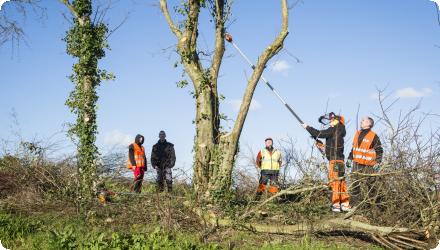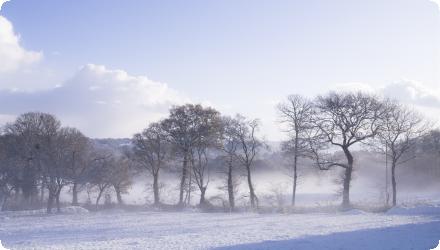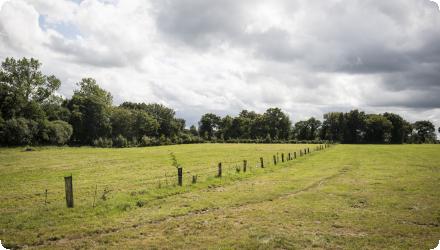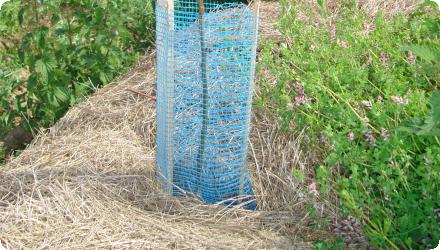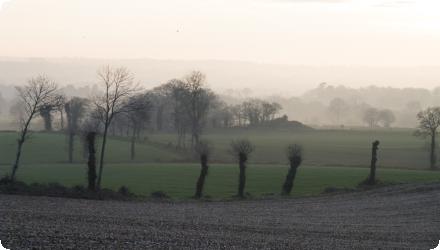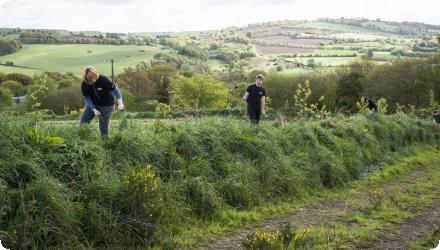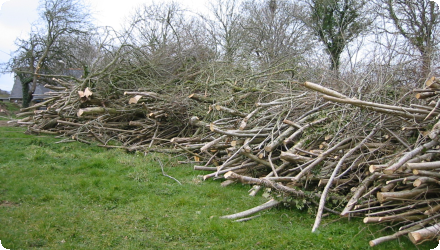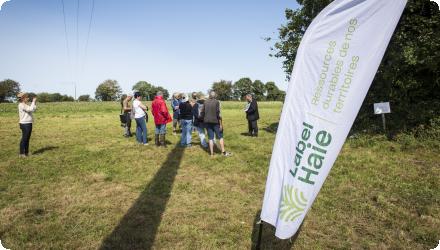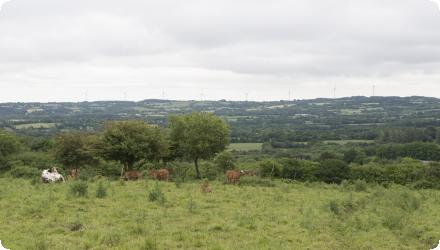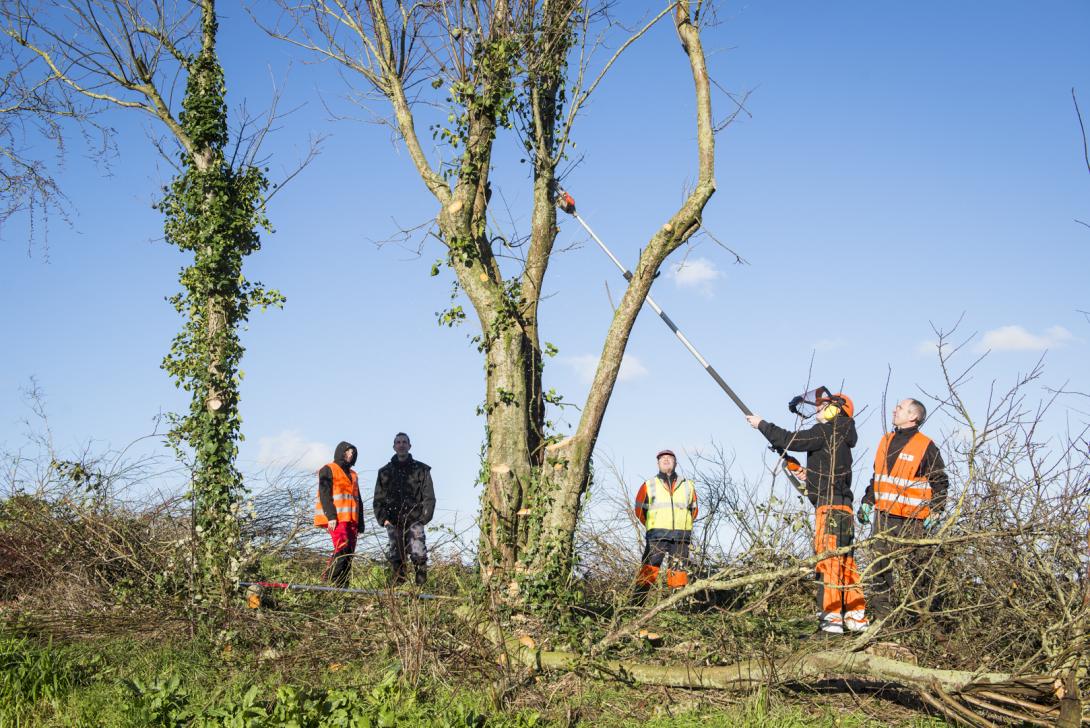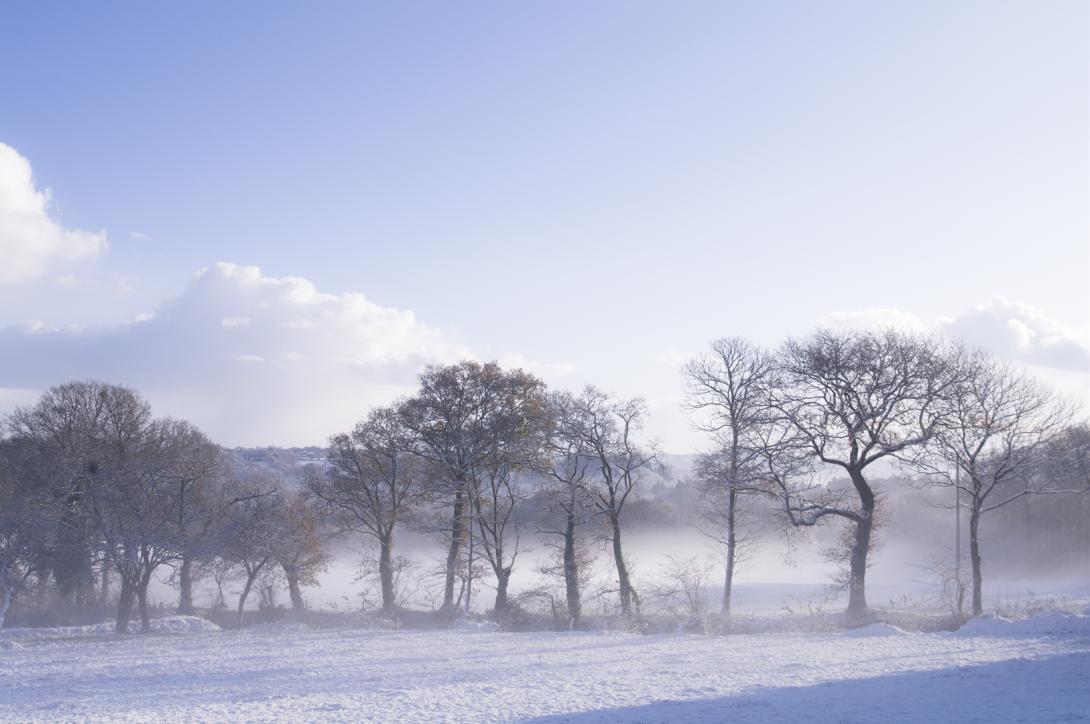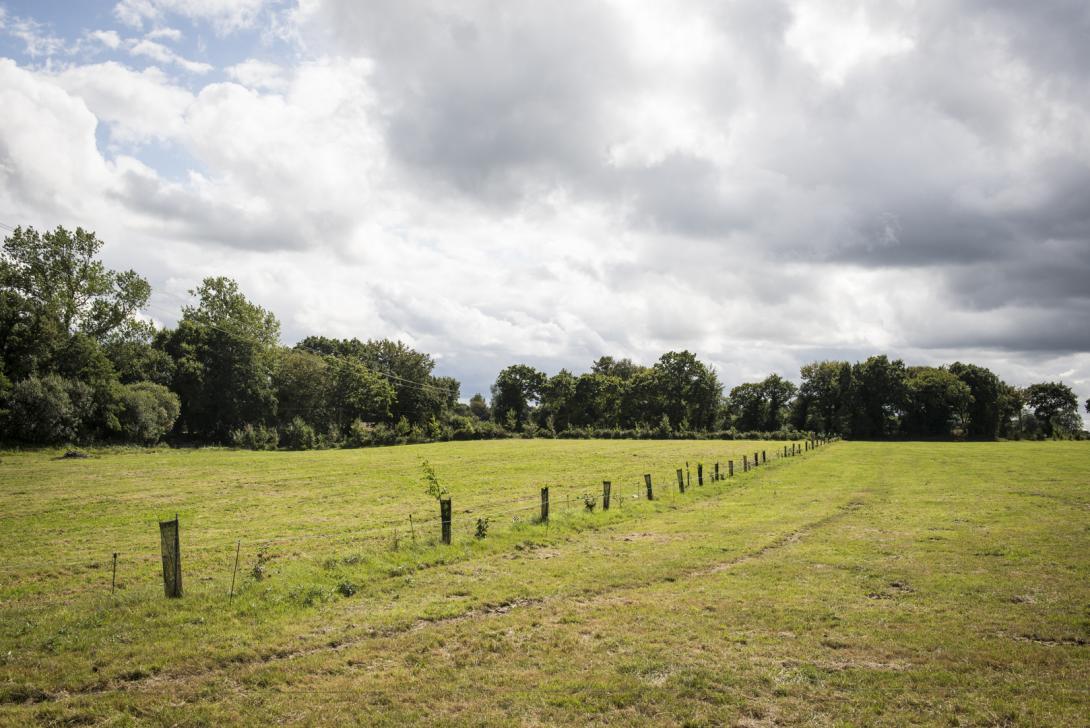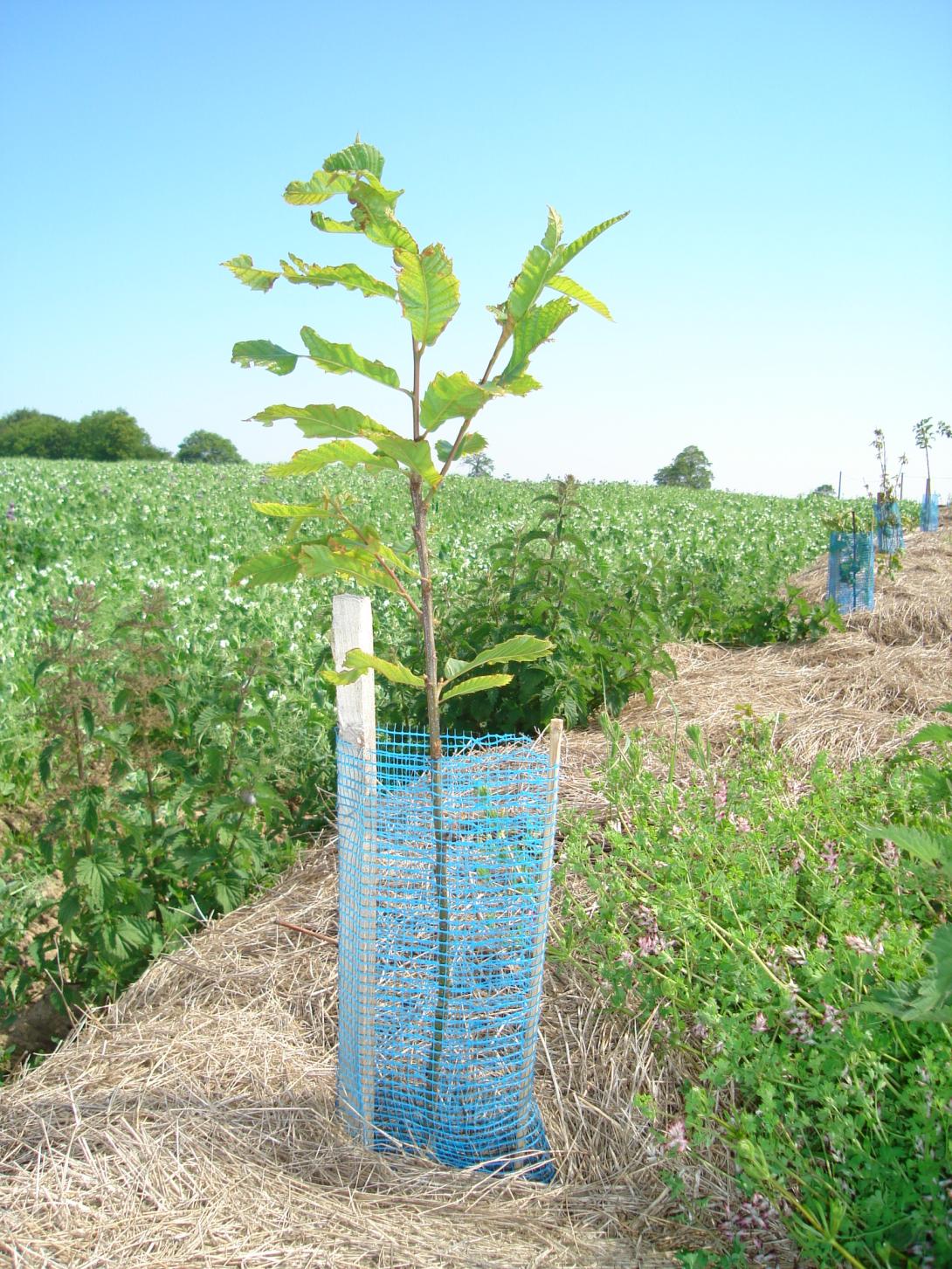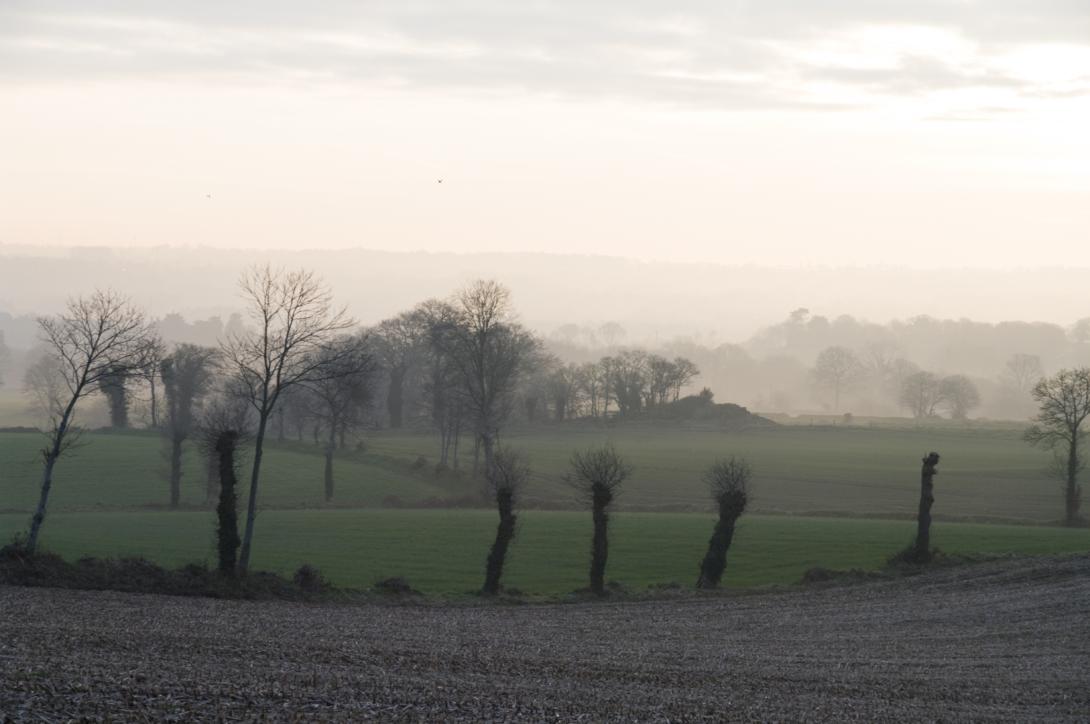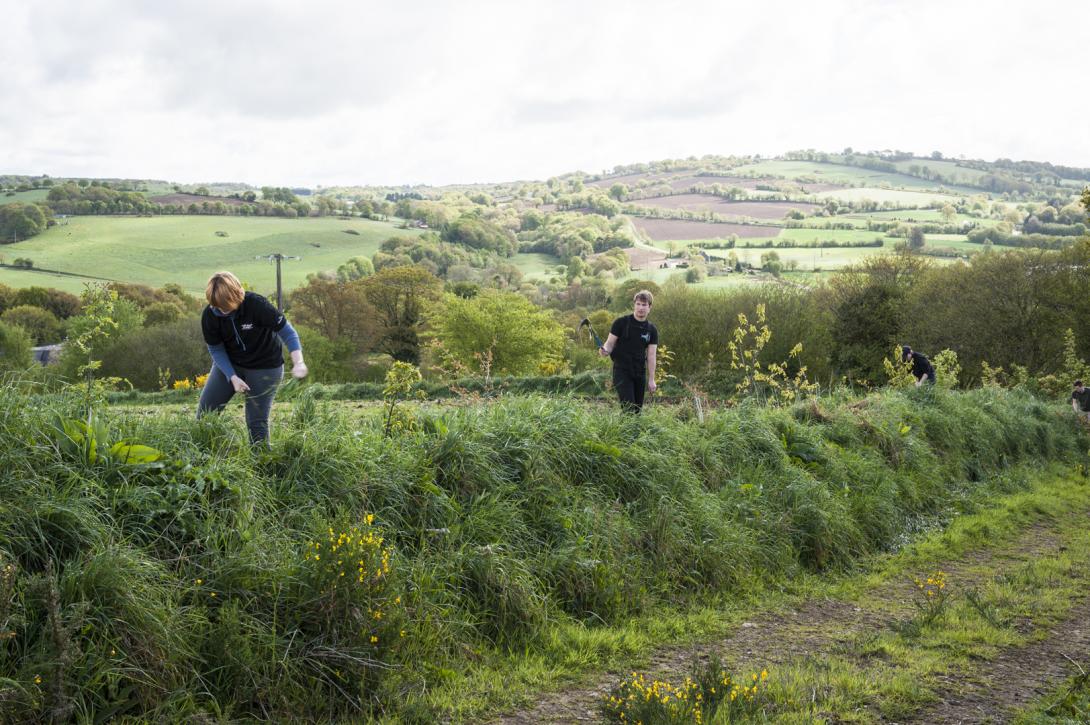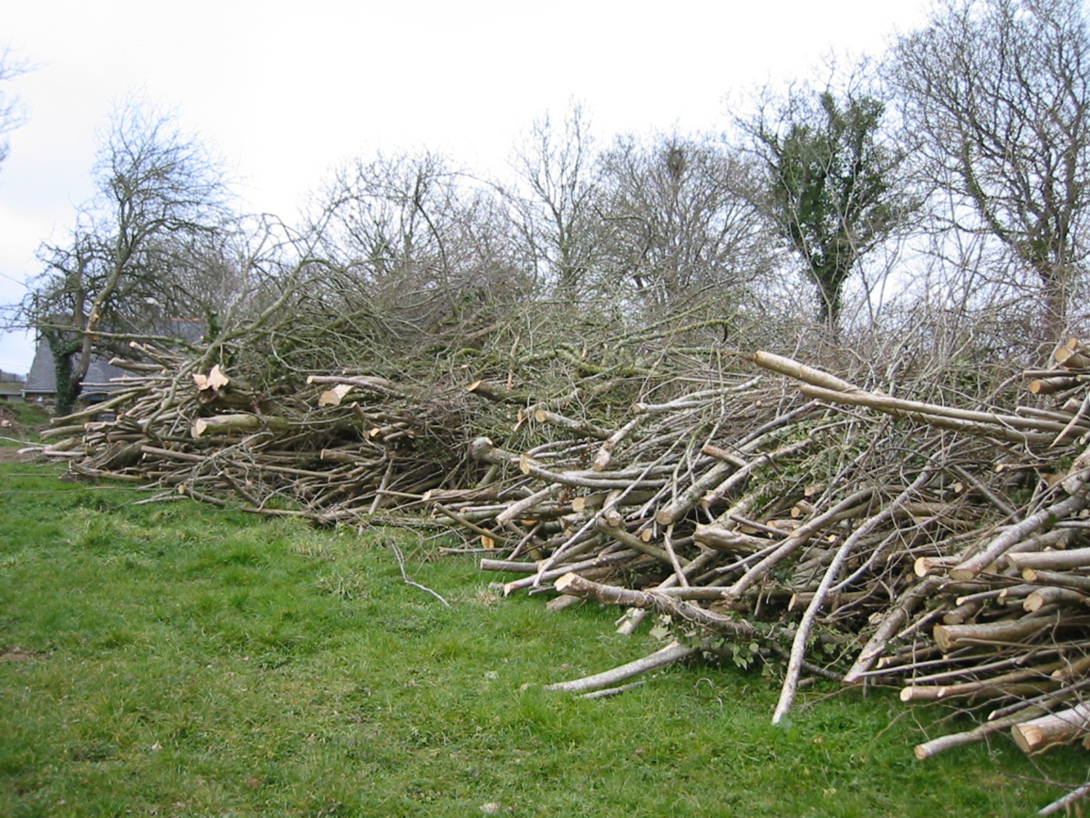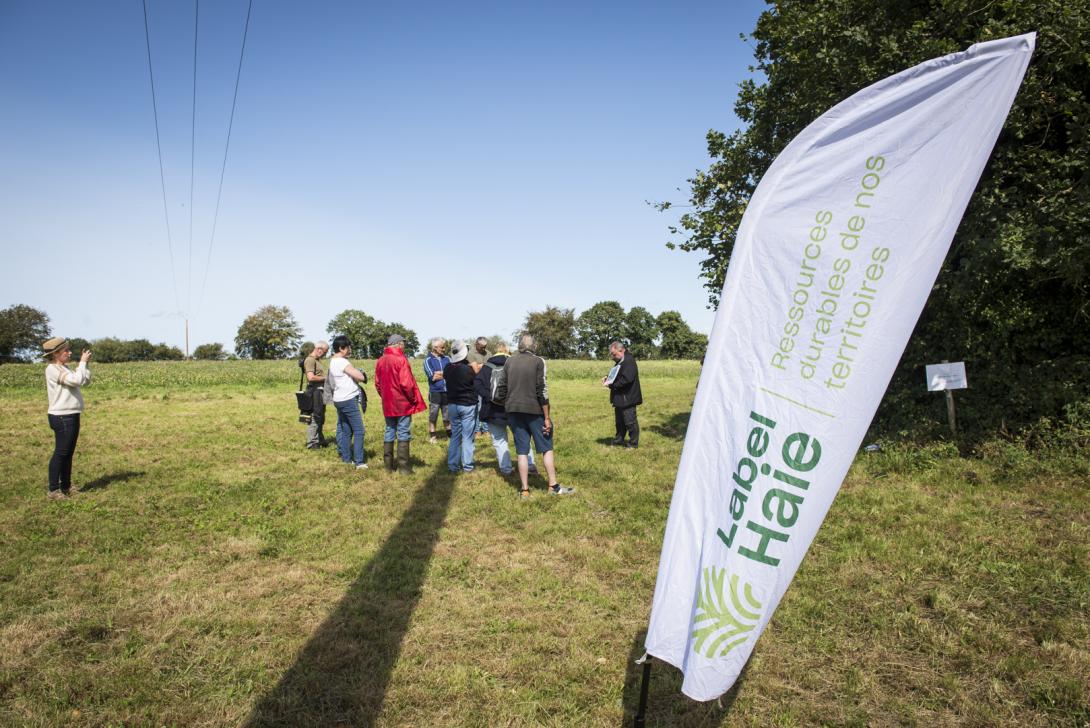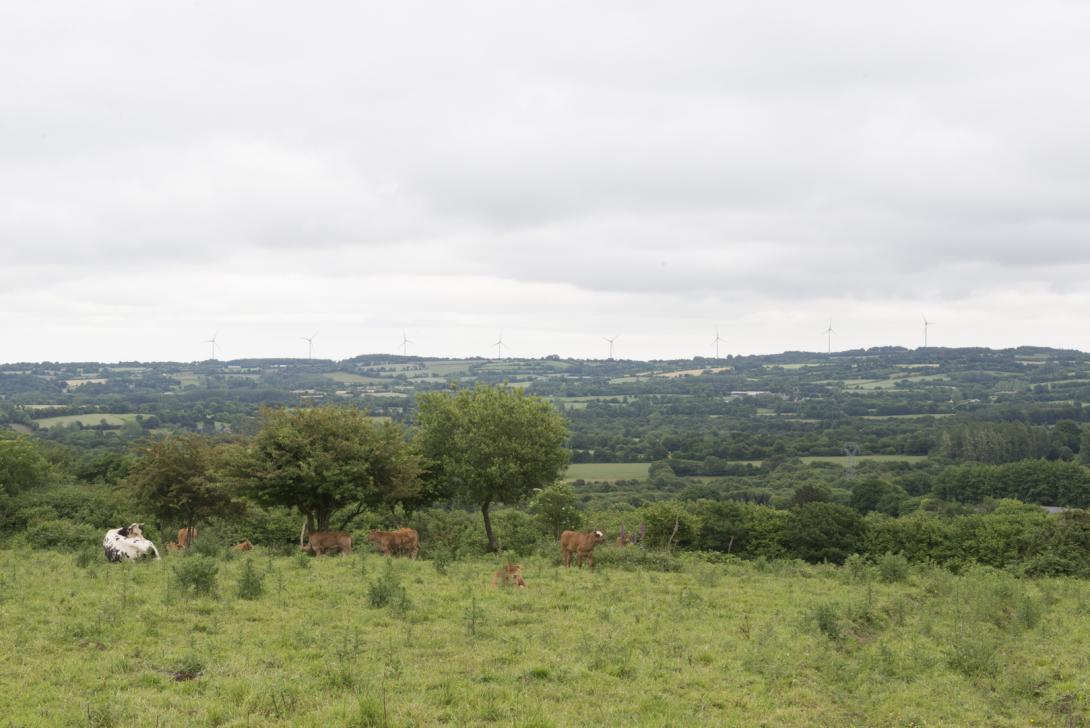Last update
2025
Summary
The Léguer River catchment is one of the most hedged areas in Brittany, but has suffered a decline in its hedgerow mesh as a result of agricultural mechanization and land consolidation operations. Faced with the degradation of the Leguer's water quality observed in the 1990s, elected officials in the watershed became aware of the need to preserve the hedgerow, and to consider its restoration to improve water quality. Since 1999, the Leguer's watershed committee undertook awareness-raising of the watershed population, before experimenting with the restoration of hedges and embankments in several pilot basins.
This work was then extended to the entire watershed, leading to the restoration of hundreds of kilometers of hedges and embankments. This action is still ongoing today (with new hedges planted every winter), however no longer managed at the whole basin scale but by different intermunicipalities.
It aims in particular to ensure the sustainability of existing linear thanks to urban planning tools and the promotion of hedged farmland.
A complementary action comes with the river management (as the Léguer is labellized "Wild River"), which includes riparian forest restoration to create shade on the river and reduction of the risk of water heating, purification processes, biodiversity of the watercourse, etc.
The developpment of agroforestry and intercropping is also being studied to further the agricultural practices evolution in the basin.
This work was then extended to the entire watershed, leading to the restoration of hundreds of kilometers of hedges and embankments. This action is still ongoing today (with new hedges planted every winter), however no longer managed at the whole basin scale but by different intermunicipalities.
It aims in particular to ensure the sustainability of existing linear thanks to urban planning tools and the promotion of hedged farmland.
A complementary action comes with the river management (as the Léguer is labellized "Wild River"), which includes riparian forest restoration to create shade on the river and reduction of the risk of water heating, purification processes, biodiversity of the watercourse, etc.
The developpment of agroforestry and intercropping is also being studied to further the agricultural practices evolution in the basin.
Position
Latitude
48.5865
Longitude
-3.3920
Project
NWRM
National Id
France_15
Installation date
1999-ongoing
Implementation Status
RBD code
FRG-La Loire, les cours d'eau côtiers vendéens et bretons
Transboundary
0
Photo gallery
Location of the project
The Leguer is a coastal river of the Côtes d'Armor that flows into the Bay of Lannion, and whose basin has a historically dense hedgerow mesh.
NUTS Code
FR52 - Bretagne
Project's objectives
The main objective of the project was to improve water quality and control erosion. Limiting runoff allows water to stay longer before reaching the watercourses, giving time to natural processes to occur to purify the water by soil microorganisms or light.
Secondly, the restoration of hedged land is of interest for biomass supply, biodiversity conservation, carbon sequestration, renewable wood production, for the wind-breaking role of hedges, livestock protection and landscape restoration.
There has been some quantified objectives (eg. linear length of hedges planted) but not for the whole project.
Secondly, the restoration of hedged land is of interest for biomass supply, biodiversity conservation, carbon sequestration, renewable wood production, for the wind-breaking role of hedges, livestock protection and landscape restoration.
There has been some quantified objectives (eg. linear length of hedges planted) but not for the whole project.
Involved Partners
| Authority type | Authority name | Role | Comments |
|---|---|---|---|
Climate zone
cool temperate moist
Temperature
11.4 °C
Annual rainfall range
900 - 1200 mm
Elevation range
167 m
Vegetation class
This is a highly hedged landscape ("bocage"), with approximately 150 linear meters of hedges per hectare.
Water bodies: Ecological Status
Good
Water bodies: Chemical Status
Failing to achieve good
Water quality status
Eutrophication issues due to agricultural activity.
Project scale
Large
Project scale specification
The project is covering the entire Léguer river basin and specific research were conducted on sub-catchments.
It also initiated a 'Hedgerow' label, certifying the proper management of hedgerows within a territory, with a national recognition.
It also initiated a 'Hedgerow' label, certifying the proper management of hedgerows within a territory, with a national recognition.
Performance timescale
< 1 year
Project area
50 000 ha
Area specifications
More than 300 km of planted or restored hedges and embankement, actively growing every year.
Lifespan
Long-term/permanent, assuming sustainable maintenance keeps going.
A voluntary collaboration with farmers. Co-developing a hedgerow management plan with them.
The landscape is historically hedged. There is a cultural commitment among farmers, and we know that hedges will be effective.
The planting of hedges helps to fight against erosion and improve the quality of surface water. The many co-benefits of this measure have contributed to the progressive extension of the restoration program to the entire watershed.
The planting of hedges helps to fight against erosion and improve the quality of surface water. The many co-benefits of this measure have contributed to the progressive extension of the restoration program to the entire watershed.
Total cost
Millions of euros
Costs total information
Total hard to stimate as it depends every year and spans accross different institutions.
Local fundings provided by water providing authorities and complemented by external sources (European, national, regional).
Local fundings provided by water providing authorities and complemented by external sources (European, national, regional).
Financing authorities
Type of funding
EU-funds: Rural development funds
Comments
Contributes to the external subventions of about 70% (varying % each year)
Type of funding
Sub-national funds
Comments
Contributes to the external subventions of about 70% (varying % each year)
Comments
Contributes to the external subventions of about 70% (varying % each year)
Type of funding
Local funds
Comments
Former local catchment water authority that implemented the measures
Comments
Currently carrying out the measures.
Compensations
0
Compensations annual information
There was no need for compensations as there were no actual loss for the occupied surfaces, which remain under CAP fundings.
Policy context
The Léguer River catchment area is one of the most hedgerow territory in Brittany, with an average 150 meters of hedge per hectare. However, this hedgerow has been gradually eroded as a result of agricultural mechanization and land consolidation, as well as the phasing out of hedge and slope maintenance seen as a cost without any benefit. This decline was estimated at a loss of 3 linear meters per hectare per year.
In Brittany, 80% of drinking water comes from surface water pumping, which makes this resource fragile and sensitive to diffuse or point pollution. Several water intake points were closed in the mid-1990s due to significant water quality degradation. Due to the positive influence that hedgerow can have on the quality of surface water, policies for the preservation and restoration of hedgerow have emerged in the region.
In Brittany, 80% of drinking water comes from surface water pumping, which makes this resource fragile and sensitive to diffuse or point pollution. Several water intake points were closed in the mid-1990s due to significant water quality degradation. Due to the positive influence that hedgerow can have on the quality of surface water, policies for the preservation and restoration of hedgerow have emerged in the region.
Land ownership
Mostly private farmland (farmers/landowners); plus public roadside hedges managed by communes.
Community involvment
No
Design consultation activity
| Activity stage | Name | Key issues | Comments |
|---|
Policy target
| Target purpose |
|---|
|
Runoff control
|
|
Peak-flow reduction
|
|
Pollutants Removal
|
|
Oher Societal Benefits
|
|
Erosion Control
|
Target Remarks
Improve water quality and curb erosion; restore hedges/embankments basin-wide (~300 km restored since 1999).
Policy pressure
| Pressure directive | Relevant pressure |
|---|
Pressures remarks
Water quality issues and the loss of cultural history of the landscape were the main pressures that motivated the project.
Policy impact
| Impact directive | Relevant impact |
|---|
Requirement directive
| Requirement directive | Specification |
|---|
Contractual arrangements
1
| Arrangement type | Responsibility | Role | Name | Comments |
|---|---|---|---|---|
|
Contractual agreement
|
Agreement between the land owning farmer and the implementing authority.
|
The implementation authority takes care of the maintenance the first 3 years after plantation of a hedgegrow in the farmer's land.
The farmer continues after that. He is the owner of the biomass produced (wood). |
The maintenance of the hedgrowth follows an official Sustainable Hedgegrowth Management Plan (Plan de Gestion Durable des Haies or PGDH), which is concieved for the farmer by the public authority for free.
|
Part of wider plan
1
Wider plan type
| Wider plan type | Wider plan focus | Name | Comments |
|---|---|---|---|
|
Regional
|
Environment & Biodiversity
|
"Breizh bocage"
|
The programme aims at the Brittany region level to enhance protection and restoration of hedgerow landscapes.
|
The project does not implement monitoring of the flow and water level of the Leguer.
Only short studies, limited in time and space were carried out/
Betwenn 2000 and 2002, the Comité du Bassin Versant du Léguer (CBVL) conducted a study of the Kervulu watershed (pilot basin) to assess the effect of hedgerow restoration and changes in practices on water quality.
The Leguer hedgerow project, led by INRA (UMR BAGAP), aimed to evaluate the role of the hedge as a shelter for auxiliary fauna, both through the in situ assessment of hedge biodiversity at the hedge and farm levels, and through the analysis of the ecological connectivity of the landscape and the establishment of ecological networks in planning documents.
Betwenn 2000 and 2002, the Comité du Bassin Versant du Léguer (CBVL) conducted a study of the Kervulu watershed (pilot basin) to assess the effect of hedgerow restoration and changes in practices on water quality.
The Leguer hedgerow project, led by INRA (UMR BAGAP), aimed to evaluate the role of the hedge as a shelter for auxiliary fauna, both through the in situ assessment of hedge biodiversity at the hedge and farm levels, and through the analysis of the ecological connectivity of the landscape and the establishment of ecological networks in planning documents.
Maintenance
Clearing out seedlings so that smaller ones can grow without being buried. Pruning growing trees to match desired growth.
Catchment outlet
A pre-configuration study was conducted to assess the effect of hedgerow restoration and practice changes on water quality.
No cost assessement was studied, no other measures were considered.
An economic benefit comes from the sale of wood, purchase and drying to sell in wood chips to equipped communities.
Energy-wood production in the basin was estimated in 2019 as € 980,000 yearly, 39 % of which is from the bocage part.
Energy-wood production in the basin was estimated in 2019 as € 980,000 yearly, 39 % of which is from the bocage part.
Carbon storage in the bocage elements of the Léguer basin as an ecosystemic service was estimated in 2018 as € 54 millions + € 1.2 million for annual additional captation.
Hydrological effects
The hydrological response to rain event seems longer than river basins with no action on hedgerows. Farmers also report complete stop of mud flows in lower areas of the fileds which were previously common problem.
Information on runoff reduction
Runoff is slowed down by the bocage landscape.
Maintenance baseflow
1
Information on Maintenance baseflow
The slowed down water runoffs maintains higher water quantity in the Léguer Basin.
Information on Reducing flood risks, quantity
During floods, it was observed that the hydrological behaviour of the Leguer appeared less reactive than that of other nearby rivers that had not been the subject of such a restoration program.
In addition, farmers report that they have noticed the disappearance of mud flows on the lower part of their fields following the creation of hedges that break the slope.
In addition, farmers report that they have noticed the disappearance of mud flows on the lower part of their fields following the creation of hedges that break the slope.
Water quality overall improvements
Positive impact-WQ improvement
Information on Water quality overall improvements
The study carried out in the Kervulu basin showed that the sub-basins that had been the subject of restoration of the hedgerow coupled with the adoption of rationale weed control practices contributed less to pollution (in particular phosphorus and pesticides) of surface water than the other basins.
Overall, a reduction of chemical and nutrient pollution has been found.
Overall, a reduction of chemical and nutrient pollution has been found.
Information on Water quality Improvements (N)
Since the 2000s, an improvement has been observed on the nitrate parameter, while it was increasing in the 1990s.
Information on Water quality Improvements (W T°)
Water heat is limited with the shading provided.
1
Monitoring (Léguer Bocage Project) has demonstrated the role of hedgerows as refuge habitats for biodiversity. Urbanistic plans include the hedgegrowths as ecological corridors (Trame Verte & Bleue).
Information on Ecosystem impact GHG soil carbon
Hedgegrowth annual captation : 19,982.99 tons eq.CO₂
Hedgegrowth annual stock : 713,829.98 tons eq.CO₂
Hedgegrowth annual stock : 713,829.98 tons eq.CO₂
Key lessons
The area was primarily the subject of consolidation actions to increase size of fields by agriculture authorities. This led to an important destruction of hedgerows and some farmers were therefore reluctant to replant hedges shortly after.
The fact a wood energy sector using wooden chips elaborated using recovered wood from the maintenance of hedges has helped convince local stakeholders to engage at such a large scale. About 100 farmers out of 600 in the basin are volonteers in this project.
More than 300km of hedgerows and embankments have been restored in the basin, with around 20km more every year. The hedges reconstitutions are slowing down each year, but the volontary farmers are more motivated than ever.
A reduction of pollution has been found. The habitat role of hedgerows for agriculture auxilaries, made possible in oparticular with a diverse and good stratified hedge
The project has created a common dynamic towards preservation and restoration of hedges and embankment beyond farmers, including citizen and elected officials and created a territorial identity.
The project leader underline is important to watch not only the increase of the hedgerows but also their maintenance.
The fact a wood energy sector using wooden chips elaborated using recovered wood from the maintenance of hedges has helped convince local stakeholders to engage at such a large scale. About 100 farmers out of 600 in the basin are volonteers in this project.
More than 300km of hedgerows and embankments have been restored in the basin, with around 20km more every year. The hedges reconstitutions are slowing down each year, but the volontary farmers are more motivated than ever.
A reduction of pollution has been found. The habitat role of hedgerows for agriculture auxilaries, made possible in oparticular with a diverse and good stratified hedge
The project has created a common dynamic towards preservation and restoration of hedges and embankment beyond farmers, including citizen and elected officials and created a territorial identity.
The project leader underline is important to watch not only the increase of the hedgerows but also their maintenance.
Success factor(s)
| Success factor type | Success factor role | Comments | Order |
|---|---|---|---|
|
Attitude of relevant stakeholders
|
main factor
|
High motivation of some farmers to participate in this project. Their sensitivity to biodiversity preservation and/or to bocage culture valorization. |
1
|
|
Financing possibilities
|
main factor
|
Access to various funds allowed this expensive measure to continue. |
2
|
Driver
| Driver type | Driver role | Comments | Order |
|---|
Transferability
Hedgerows are transferable to other agricultural landscapes, even those with few hedgerows, which offer a great opportunity to quickly create long linear lengthes of hedges.
Source(s)
English
